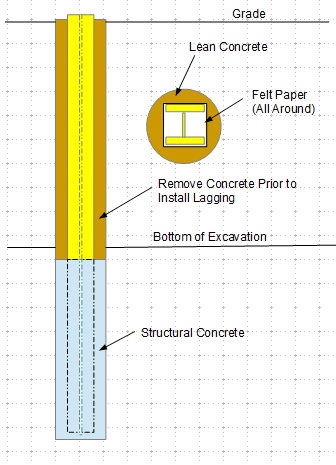milkshakelake
Structural
I'm designing a 14' deep basement wall next to a 3 story brick building. The adjacent building is 4' away and its footing is 5' deep so there is a surcharge. The peak of the surcharge would be about 8' to 9' below grade in my estimation.
Normally, I use a tangent or secant pile wall when there's a building surcharge. However, is it acceptable to use a soldier pile wall with wood lagging? If there is backpack or grout between wood lagging, maybe there won't be soil loss through the gaps. The soil is about 6' of fill and then silty sand with traces of rock. A weird idea I was thinking was to use steel plates instead of wood lagging up to the peak surcharge point to minimize the number of gaps.
The reason I'm considering soldier pile wall is because the next door building is relatively small and this project is too small to justify a tangent pile wall (5 stories, 40'x100' lot).
Normally, I use a tangent or secant pile wall when there's a building surcharge. However, is it acceptable to use a soldier pile wall with wood lagging? If there is backpack or grout between wood lagging, maybe there won't be soil loss through the gaps. The soil is about 6' of fill and then silty sand with traces of rock. A weird idea I was thinking was to use steel plates instead of wood lagging up to the peak surcharge point to minimize the number of gaps.
The reason I'm considering soldier pile wall is because the next door building is relatively small and this project is too small to justify a tangent pile wall (5 stories, 40'x100' lot).

